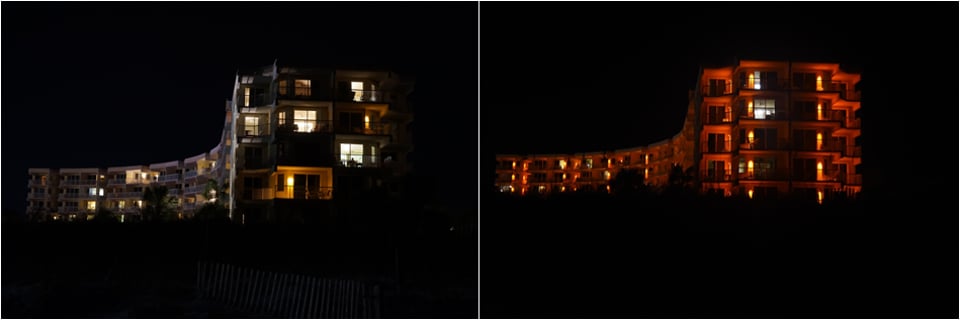Wildlife group illuminates role for home centers
While many environmental problems seem immense and intractable, small adjustments can make a crucial difference.
That’s certainly the case with lighting, which can wreak havoc on the animal kingdom—especially when it comes to our favorite flippered friends (sea turtles). Thankfully, there are small adjustments homeowners (and store owners) can make to cut critters a break.
According to experts from the Sea Turtle Conservancy based in Gainesville, Fla., wildlife-friendly fixtures follow three simple rules:
- Low. Use low mounting heights, wattages and lumens.
- Shielded. Shield the light source so it is not directly visible, and also direct the light toward the ground where it is needed.
- Long. Sea turtles (along with other animals) are less disturbed by long wavelengths of light (560 nanometers or longer). Long wavelength lights appear amber, orange and red in color.
The problem, according to Rachel Tighe, STC’s lighting project manager, is that “obtaining wildlife-friendly fixtures and bulbs can be quite challenging for homeowners.” This remains stubbornly true despite widespread and growing local lighting ordinances meant to protect wildlife. In response, Florida’s Fish and Wildlife Conservation Commission has established extensive sea turtle lighting guidelines, and the entity even reviews and certifies specific fixtures to highlight approved devices. However, getting ahold of certified lighting isn’t always easy.
To remedy this ongoing problem, STC is embarking on an initiative to make wildlife-friendly lighting more readily available in hardware and home improvement stores throughout coastal regions of Florida. It could be a win-win-win for consumers, companies and animals alike. Stores can easily market eco-conscious products, and homeowners can feel like they’re doing their part to help preserve the environment. And, according to Tighe, carrying turtle-friendly lighting that competitors don’t have in stock could help get new customers in the door—and perhaps drum up repeat business.
“More people are being required to install lighting but not sure where to turn,” says Tighe.
Sea turtle lighting rules, regulations and remedies
Ninety percent of sea turtle nesting in North America occurs in Florida, and Florida also hosts the largest population of nesting loggerhead sea turtles in the world, per STC. So, the fate of the world’s sea turtle population hangs heavily on Florida. Unfortunately, artificial lighting has a devastating, disorienting effect on the animals.
Sea turtles are a federally protected endangered species, and many laws and efforts are in place to protect the species. Essentially, according to STC, all of Florida’s sandy coastline areas have requirements for beachfront lighting to protect sea turtles, and the requirement for coastal properties to have wildlife-friendly lighting is continually growing. According to STC’s analysis of Florida’s sea turtle lighting protections, out of 113 local governments Florida analyzed, 102 have a lighting ordinance for sea turtle protection.
As you can imagine, that’s a lot of homes that are subject to light-specific legislation. That means there is a permanent and growing demand for wildlife-friendly fixtures—which presents a good opportunity for store owners.
How to get involved
Ultimately, STC’s goal is to have wildlife-friendly fixtures readily available in stores at coastal home improvement and hardware stores—and beyond. For now, the organization provides a handy list of retailers where certified lighting is available for purchase. For those interested in carrying wildlife-approved lighting, Tighe says to contact STC directly, and a rep can put you in touch with specific lighting manufacturers. STC can also provide collateral materials, such as brochures, displays and end caps, to help educate and persuade shoppers.
As for the items themselves, most wildlife-friendly fixtures are typically in the range of $40 to $100, says Tighe. The bulbs are LED and a bit more expensive than typical bulbs but typically come with a five-year warranty.
This sort of lighting is not just good for turtles, apparently. According to Tighe: “Dark-sky compliant lighting helps bats, frogs, fireflies and migratory birds.” Low-wattage lighting may also be good for humans, too. “Long wavelength lighting helps people with their circadian rhythm.”




